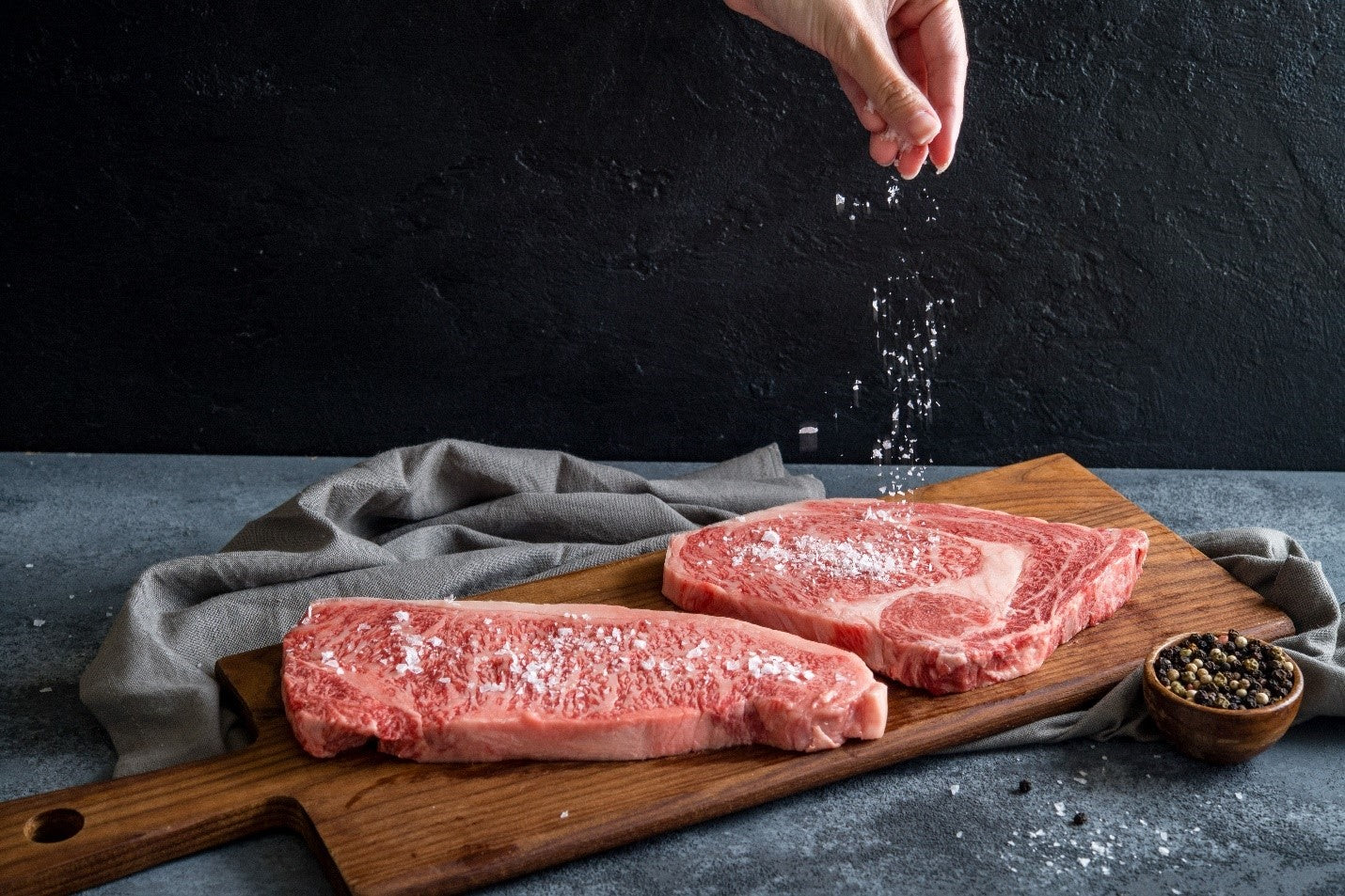Introduction
In the world of cooking, few things are as satisfying as a perfectly cooked steak. However, the key to achieving steak perfection starts long before it hits the grill or pan – it begins with the art of salting. Welcome to the Perfect Salting a Steak Guide, where we’ll explore the nuances of seasoning your steak to culinary excellence. From selecting the right salt to timing and techniques, this guide has got you covered.
Let’s dive into the world of salt and steak!
The Importance of Proper Salting
Salting a steak is more than just a sprinkling of seasoning; it’s a culinary ritual that enhances flavor, texture, and juiciness. When done right, salting can transform an ordinary steak into a restaurant-worthy masterpiece. Here’s why it matters:
Enhancing Flavor
A well-salted steak not only tastes more delicious, but it also brings out the natural beefy flavors. Salt acts as an enhancer, making each bite more savory and satisfying.
Tenderizing the Meat
Salt helps to break down muscle fibers, leading to a tender and succulent steak. It’s like a secret handshake between the salt and the meat.
Retaining Moisture
Contrary to the myth that salt draws out moisture, proper salting helps the steak retain its juiciness. It creates a barrier on the surface that keeps the moisture locked in.
Creating a Crispy Crust
A perfectly salted steak forms a caramelized crust when seared, adding a delightful crunch to every bite. It’s the hallmark of a well-cooked steak.
Choosing the Right Salt
Not all salts are created equal, and your choice of salt can significantly impact the final flavor of your steak. Here are some options to consider:
Kosher Salt: A Staple in Steak Seasoning
Kosher salt is the go-to choice for many chefs and home cooks when salting a steak. Its coarse texture makes it easy to control, and it adheres well to the meat’s surface.
Sea Salt: A Natural Touch
Sea salt, particularly the flaky or coarse varieties, can add a hint of brininess and a satisfying crunch to your steak. It’s perfect for those looking for a more natural flavor.
Rock Salt: The Steakhouse Favorite
Rock salt is often used in steakhouses for dry-aging. It provides a unique, intense flavor and is ideal for those looking to replicate the restaurant experience at home.
Infused Salts: An Extra Kick of Flavor
For an extra layer of complexity, consider using infused salts, such as garlic, rosemary, or truffle salt. These specialty salts can take your steak to a whole new level.
The Perfect Salting Technique
Achieving the perfect salt distribution on your steak is an art. Let’s go through the technique step by step:
Step 1: Timing is Everything
Salt your steak at least 45 minutes before cooking. This allows the salt to penetrate the meat, enhancing its flavor and texture. If you have more time, consider salting the steak a few hours in advance for even better results.
Step 2: Use the Pinch-and-Sprinkle Method
Rather than pouring salt directly from the container, pinch a small amount of salt between your fingers and evenly sprinkle it over the steak’s surface. This method provides better control and prevents over-salting.
Step 3: Cover Both Sides
Remember to salt both sides of the steak for a balanced flavor. The meat is thick, and seasoning one side won’t suffice.
Step 4: Pat, Don’t Rub
Gently pat the salt onto the steak’s surface, ensuring it adheres. Avoid rubbing, as it can remove the salt.
FAQs
Q: Can I use table salt for salting my steak?
A: Table salt is fine, but it’s generally more concentrated. If you use it, be extra cautious not to over-salt your steak.
Q: How much salt should I use?
A: A general rule of thumb is about 1 teaspoon of kosher salt for each pound of meat. Adjust to your taste.
Q: Can I season my steak right before cooking?
A: While it’s possible, salting in advance yields better results. It allows the salt to penetrate the meat for enhanced flavor.
Q: What’s the ideal thickness for a steak?
A: A steak that’s at least 1 inch thick is recommended for the best cooking results.
Q: Can I experiment with different spices in addition to salt?
A: Absolutely! Experimentation can lead to exciting flavor combinations. Just don’t forget the salt’s essential role.
Q: Can I salt frozen steak?
A: Salting a frozen steak isn’t ideal. It’s best to thaw it first, then follow the salting process.
Conclusion
Mastering the art of salting a steak is a culinary skill that can elevate your cooking to new heights. From choosing the right salt to the perfect technique, this guide has provided you with the knowledge and expertise to season your steak like a pro. The next time you fire up the grill or heat up the pan, you’ll be well-equipped to create a steak that’s tender, flavorful, and unforgettable.


